Best cameras for kids 2024: the best cameras for children and teens
The best cameras to buy for young creatives
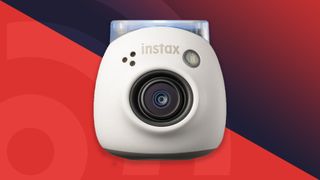
1. The list in brief
2. Best for family fun
3. Best for rough and tumble kids
4. Best screen free
5. Best DIY build project
6. Best camera phone for kids
7. Best for young kids
8. Best for budding vloggers
9. Best small instant camera
10. Best versatile video camera
11. Best point and shoot for travel
12. How we test
If you're looking for the best cameras for kids, then you have come to the right place. We’ve tested a massive range of cameras in order to bring you the best advice for junior photographers and filmmakers. There is something for everyone in this guide, whether it’s a toddler or a teenager you’re shopping for – from simple instant print cameras that kids can have a lot of fun with to rugged action snappers that can take a beating.
There's no one-size fits all. If you're a parent with younger children, be on the lookout for a robust snapper so you can relax as they use it, and one that's straightforward and easy to handle for small hands. However, if your child is a little bit older, they might be starting to experiment more seriously with photography and video and able to use an array of modes and controls that help them develop their photography skills or Youtuber ambitions.
The Fujifilm Instax Pal is a tiny bundle of fun that might just become your digital family pet, while the Osmo Pocket 3 is the most powerful vlogging camera yet. There are another eight other great options in this guide covering a range of interests and abilities, and we've listed pros and cons for each one, so you’ll be able to find the perfect camera for your little ones. Let the fun begin!
If your kids are a little bit older, you might be tempted towards our best cheap cameras, rather than those that have been specifically targeted at younger audiences. You might also want to consider the best cheap smartphones as a good option. It’s what kids are perhaps more used to using, and you get the versatility of being able to use it as a phone too.

Tim is TechRadar's Cameras editor, with over 15 years in the photo video industry and most of those in the world of tech journalism. Tim has developed a deeply technical knowledge and practical experience with all things camera related. He’s also worked in video production with clients including Canon, and volunteers his spare time to consult a non-profit, diverse stories team based in Nairobi.
The quick list
If you don’t have time to read our full list of the best cameras for kids, you can read the round-up below for a shortcut to the top options for your needs and budget. If you find one that takes your fancy, use the links to jump to our full write-up.

The best for family fun
With the option to print now or print later using one of Fujifilm’s excellent portable Link printers, the Pal is an all-round smart choice with familiar Instax quality, unless you want an entirely analog experience. Pal might just become your digital family pet. Note that the printer is sold separately.
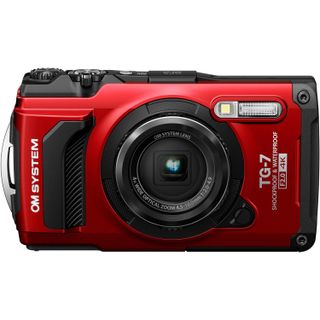
The best for rough and tumble kids
A great grab-and-go compact that you can take pretty much anywhere. The scene modes are plentiful, and allow even beginners to capture good images. Whether you want to photograph family vacations, rugged adventures, flora and fauna, or construction sites, the TG-7 is practical yet almost fun, with a hardy design that won't hold you back.

The best screen free
The Camp Snap's strength is what it doesn't have, and its consequent unadulterated simplicity. It scores better by standing out and not having a screen, and is a fun choice for young families. It looks great and has point-and-shoot simplicity.

The best DIY build project
We think the Konstucktor F is a fantastic option for those that love to build, see how things work, and enjoy the fruit of their labor with a charming finished product. Alternatives from Lomography include the LomoMod No.1 kit, which is also well worth a look.

The best camera phone for kids
The iPhone SE gives you a lot of power and headroom for a tiny, 4.7-inch screen smartphone that doesn't even have a depth sensor on the front. Still, the A15 Bionic is up for anything, from shooting and editing 4K videos to playing intense action games.
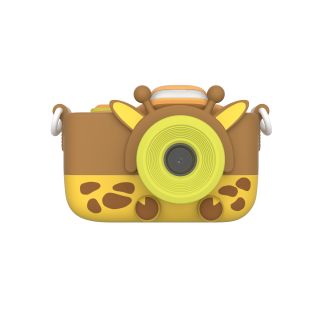
The best for young kids
If you're thinking about getting a first camera for a little kid, then there are a few ‘toy’ options with built-in games from V-Tech. For a dedicated camera minus the games, myFirst has some cute options too, including the myFirst Camera 3.
Load the next 4 products...
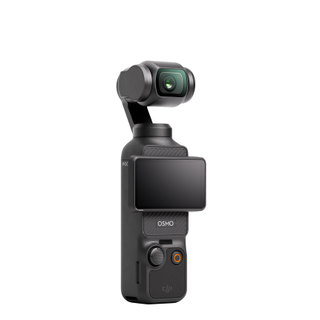
The best for budding vloggers
The device is beautifully designed, and carefully crafted with every component sitting nicely in the overall design. The 1-inch sensor delivers great image quality across both photo and video, with higher-resolution video capabilities in the slow-mo mode and greatly improved low-light capabilities.
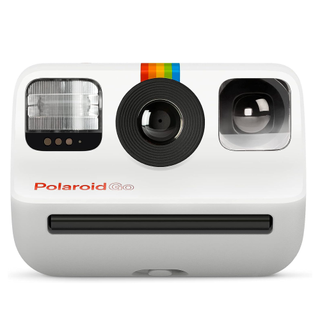
The best instant camera for small hands
Instant photography is ideal for little learners and no camera epitomizes point-and-shoot simplicity better than the Polaroid Go. Pretty much the dinkiest instant print camera you can buy, its cute, compact form is perfect for small hands to get to grips with.
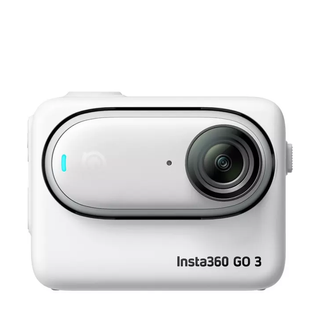
The best versatile video camera
This is a great magnetic action camera. Its core unit can fix to pipes, rails and fridges to name a few makeshift surfaces, and when docked in its Action Pod, you get a touchscreen that flips out so you can frame vlogs too.
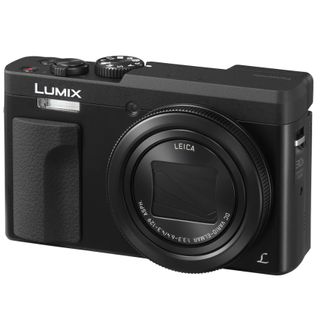
The best point and shoot for travel
A point-and-shoot travel zoom is ideal for those after a small, do-it-all camera. A dedicated camera like the ZS70 / TZ90 could be a better and more versatile option for your child than a smartphone with all its distractions.
The best cameras for kids in 2024
Why you can trust TechRadar
Below you'll find full write-ups for each of the best cameras for kids in our list. We've tested each one extensively, so you can be sure that our recommendations can be trusted.
Best for family fun

Specifications
Reasons to buy
Reasons to avoid
✅ You want an Instant camera for the whole family
The tiny design is much easier to use for small hands than the (often) clunky Instax alternatives with built-in printing capability.
✅ You want an Instax that you use day to day
The cost of the camera and printer is more than most other analog Instax cameras, but the running cost is much lower.
❌ You want an all-in-one instant camera
If you want to print your Instax Pal shots, you need a compatible Instax Link printer.
❌ You want the best image quality
No Instax camera and printer makes technically excellent photos (they have the lovely Instax color, though).
This fuss-free ball of fun – it's about the size of a golf ball, to give you an idea – is suitable for all ages, and the closest a camera can be to a digital pet; it lights up and emits a happy jingle when powered on, and a sad sound when inactivity sends it to sleep, while the compatible Instax Pal app gifts you digital rewards for your activity. Tamagotchi, eat your heart out.
The Pal might well have the Instax name, but it’s not an instant camera as we know it. It’s a digital-only camera that fits better in the hand, printing via one of Fujifilm’s Instax Link printers, which come in ‘Mini’, ‘Square’ or ‘Wide’ formats; directly via a Bluetooth connection; or through the new Instax Pal app. The Pal is the Instax camera that might actually be used day-to-day, and not stowed away in the cupboard once your film supply has run dry, as is so often my experience with analog Instax cameras.
To me, the Pal feels like the best of both worlds; it’s a camera that’s not weighed down by a built-in a printer, while the shoot-to-print experience – either directly, or through the app – is seamless. You can be selective over what you print via the convenient app, and not waste your expensive film by shooting straight to print. It might not be the analog soul, but you can be sure to only print the best shots, while the free app and editor should provide plenty of fun for adults and kids alike.
Read our in-depth Fujifilm Instax Pal review
Best for rough and tumble kids
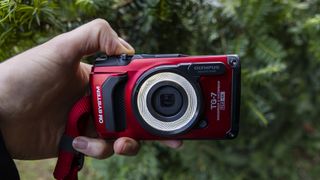
Specifications
Reasons to buy
Reasons to avoid
✅ You want an indestructible family camera
The TG-7 is a take-anywhere companion that you can drop in puddles and sand, and submerge in water up to 15m.
✅ You're more into photos than video
Offers a surprising amount of photography features for its price.
❌ You want the best image quality
There's no escaping the 12MP resolution, and the fact that real-life image quality lags behind that of many modern smartphones.
❌ You want exciting apps alongside connectivity
Using Bluetooth, you can connect the Tough TG-7 to your smartphone with the OI.
The OM System Tough TG-7 is a rugged all-in-one that you can take out shooting without the worry of damage from water, dust, dirt, sand, or clumsy drops. It easily slips into a pocket and is a proper companion on any family beach day out, or camping trip – it even has built-in GPS. The built-in zoom and scene modes mean you’re set to capture adventures regardless of skill level.
The camera can withstand 15m dips underwater (an extra underwater case lets you go deeper), drops from 2.1m, and temperatures down to 14F / -10C. The Tough TG-7's controls and somewhat guided interface are great for beginner and intermediate photographers. The zoom rocker is slightly slow to spring into action, but the raised buttons make it easy to change settings with wet hands, although it becomes more fiddly with gloves on.
Ultimately, the Tough TG-7 isn't the best action camera for photo and video quality, and its sensor lags behind aging camera phones like the iPhone 12 in many situations. But it undeniably lets you shoot in situations where you couldn't otherwise, and is versatile thanks to the zoom lens and a wealth of additional accessories like lenses and lights. The array of buttons also makes it more tactile to handle than a phone or GoPro, even if the 3-inch screen isn't touch-sensitive.
If you'd like a cheaper alternative then check out the Fujifilm Finepix XP140.
Read our in-depth OM System Tough TG-7 review
Best screen free
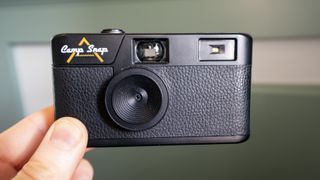
Specifications
Reasons to buy
Reasons to avoid
✅ You want time away from a screen
The Camp Snap's selling point is what it lacks. There's no screen, just a great device for taking photos.
✅ You're after a simple and low-cost gift for the kids
Being digital, the running costs are negligible, too, especially compared to film.
❌ You want decent quality pictures
It's simple, the Camp Snap camera is a low-tech product with low-bar image quality.
❌ You want to get creative
As a simple point-and-shoot camera with a fixed focus lens, no color filters and effects or shooting modes, there's no real scope for getting creative with the Camp Snap.
The retro Camp Snap camera is a clever idea; it’s a low-cost, low-tech digital reimagining of the single-use disposable camera. We all need less screen time, plus I think we all need to practice a little patience. And the low-tech Camp Snap is just what we need, because it brings us back to a happier and simpler time. No screen, no instant review of your photos.
It might look like an attractive disposable camera, but instead of film the Camp Snap can store around 2,000 digital 8MP photos on an included TF memory card (that’s the same design as a microSD card). The first time you see your photos is when the Camp Snap camera is connected via its USB-C port to upload them to your computer.
In use, the Camp Snap is point-and-shoot, all-auto simplicity for all the family. Kids will have no problems operating the camera, and parents won't be over protective over this rigid plastic camera at all – the makers label it "drop-proof".
You get a viewfinder, which is pleasant enough though somewhat interfered with by the red glare of the LED photo counter. There's also a built-in LED flash that you can turn on or off and which could benefit from being more powerful (I’d use it for any condition except bright sunlight), a thumb groove on the camera’s rear that gives a little hold, plus the USB-C port doubles up to charge the battery. With no power-hungry features, the battery should last several days of moderate use. This was designed for kids going on screen-free camping trips, and I think it appeals to a much wider audience.
Read our in-depth Camp Snap camera review
Best DIY build project

4. Lomography Konstruktor F
Specifications
Reasons to buy
Reasons to avoid
✅ You want something customizable
The fact that this camera can be constructed and customised is one of its biggest selling points.
✅ You want a reasonably priced camera
The plastic construction makes this one of the most affordable cameras out there for children.
❌ You want something really robust
The build of this camera is quite fiddly and won't last long if dropped.
❌ You want great material quality
This camera is distinctly plastic and would score zero on a premium feel scale.
Lomography is the ruler of 'alternative cameras' and one of its best models is a charming build-your-own camera kit called the Konstruktor F.
Included in the kit is everything you need to build the 35mm SLR film camera, complete with customization sticker sets. This updated ‘F’ version is compatible with flash, although this is one of many optional ‘Konstruktor’ series accessories for this reasonably priced kit. Other accessories include a close-up twin lens kit and film pack bundle.
Our nimble seven-year-old assistant was at his limit with this complex kit, which takes in the region of 1-2 hours to make – it's possibly more suited to teenagers, depending on your kids' skills and patience.
As you build, you truly get to see the internal mechanics of an SLR camera. We think the Konstucktor F is a fantastic option for those that love to build, see how things work, and enjoy the fruit of their labor with a charming finished product. Alternatives from Lomography include the LomoMod No.1 kit, which is also well worth a look.
Best camera phone for kids
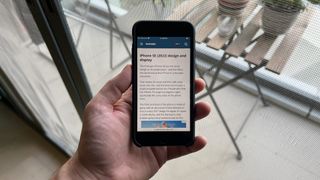
Specifications
Reasons to buy
Reasons to avoid
✅ You need a smartphone as well
As well as a fantastic camera you will also get a great smartphone to go with it.
✅ You want video capabilities
Shoot up to 4K video at 60fps with this smartphone.
❌ You want a screen free option
Other alternatives have screen free options such as the Camp Snap Camera.
❌ You want a cheap camera
As you're getting a smartphone as well as the camera, you'll have to pay for both.
Yes, this is a smartphone rather than a dedicated camera, but the reality today is that the first camera a child uses (or at least the one they'll end up using the most) is likely to be on a phone. The tech in smartphone cameras is developing at a rate of knots and you can find great cameras in mid-range smartphones, with the new Apple iPhone SE (2022) being a great example.
The latest budget iPhone model keeps a lot from its predecessor, the iPhone SE (2020). So that means the cameras - a 12MP rear and 7MP front - are the same.
However, what’s changed is the introduction of a new A15 Bionic chip, the same as found in Apple’s powerful iPhone 13 line. What that means is you get a fast and smooth experience, that should keep even the most tech-savvy kids satisfied.
Photos are not quite to the standard of the iPhone 13 Pro Max, but for kids, they're not far off and we found them to be impressive for the significantly lower price. The biggest difference to Pro models is the limitations of the single lens, namely a less effective portrait mode.
But as a first camera for kids, this smartphone opens up a whole world to explore, with its 4.7in screen and abundance of photo editing iOS apps.
Read our in-depth Apple iPhone SE (2022) review
Best for young kids

6. myFirst Camera 3
Specifications
Reasons to buy
Reasons to avoid
✅ You want photo and video capability
With 12MP photos and 1080p video you've got all bases covered.
✅ You want a selfie screen
Take selfies with ease using the selfie screen on the front.
❌ You have an older child
This camera is firmly targeted towards the younger child and would seem too childish for those older than 5 years old.
❌ You want a robust camera
This small point-and-shoot won't survive too many drops despite its 'shockproof pouch'.
If you're thinking about getting a first camera for a little kid, then there are a few ‘toy’ options with built-in games from V-Tech. But for a dedicated camera minus the games, myFirst has some cute options too, including the myFirst Camera 3.
Our seven-year-old tester declared this tiny point-and-shoot camera as "good for three-year-olds" at first sight. Certainly, its tiny form factor (available in blue or pink) and rubberized body encased in a ’shockproof pouch' will bring a smile. However, ideally, you’ll avoid this plastic camera being thrown around too much.
In use, you have a simple fixed lens 16MP rear camera that features a macro mode, though you’ll need to show a young one how it’s done. There’s also a front-facing camera above the 2 in-screen for selfies. Hold down the shutter button and you get 1080p videos.
There’s a host of digital templates that can be added to photos that provides much entertainment, though hopefully, your child won’t tire of scrolling through all of those options. This camera is best suited for kids under the age of five.
An alternative and more affordable option is the myFirst Insta 2.
Best for budding vloggers
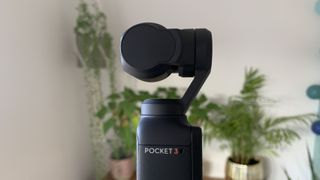
Specifications
Reasons to buy
Reasons to avoid
✅ You shoot a lot of slow-mo
The Pocket 3 delivers 4K footage at 120fps. It's also possible to record 1080p at 240fps, which is a great option to have.
✅ You want to capture audio on the go
The mic transmitter delivers great sound quality.
❌ You shoot a lot of action photos
The resolution of the camera is far from ideal for capturing high-resolution action photos.
❌ You are on a budget
This camera has amazing specs which makes it by far one of the least affordable options for a camera for kids.
The Osmo Pocket 3 has a 1-inch sensor that delivers great image quality across both photo and video, with higher-resolution video capabilities in the slow-mo mode and greatly improved low-light capabilities. Put simply, it's image quality especially in low light is better than most other pocket cameras, plus it has class-leading stabilization thanks to a built-in gimbal.
We love the carefully crafted design, especially the 2-inch screen that can be flipped to record in vertical or horizontal formats. It's perfect for viewing a live feed of the camera, as well as picking focus points, although it lacks the necessary size to be enjoyable when navigating around settings and menus.
A notable addition to this third model in the Pocket series is the multi-aspect sensor with portrait video recording. It's possible to record directly in this orientation all the way up to 3K, something that will be a dream for budding content creators – you're teenager might be a Youtuber just yet.
All this tech makes a pricy Osmo Pocket 3. You can snap up the Pocket 2 or even Pocket 1 for a great gimbal camera but at a fraction of the price.
Read our in-depth DJI Osmo Pocket 3 review
Best small instant camera
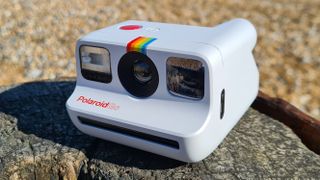
Specifications
Reasons to buy
Reasons to avoid
✅ You want a small polaroid camera
Nothing can match it for size, so while creative photographers might find it a little basic, it's the ideal party snapper.
✅ You want an easy to use camera
Simple controls with just a smattering of buttons on the retro-inspired shell, plus a digital shot counter.
❌ You want a macro mode
Other rivals include this functionality but not at this size of camera body.
❌ You want zero on-going costs
The film is not particularly cheaper so you'll need to factor this into your decision making.
Instant photography is ideal for little learners and no camera epitomizes point-and-shoot simplicity better than the Polaroid Go. Pretty much the dinkiest instant print camera you can buy, its cute, compact form is perfect for small hands to get to grips with.
Controls are simple, too, with just a smattering of buttons on the retro-inspired shell, plus a neat digital shot counter for keeping track of snaps. Fixed focus and lack of a macro mode do place some limits on creativity, but also make shooting with the Go a straightforward and accessible experience for kids of all ages.
As they get more adventurous with their photography, youngsters can override the Go’s automatic flash and experiment with double exposures. Credit card-sized prints aren’t the biggest, but they do deliver those dreamy pastel tones and dark contrasting shadows so evocative of instant photography.
Film refill packs do cost more than the average pocket-money budget, but the Polaroid Go is still an entertaining, easy-to-use, and portable way for children to get in on the photographic fun.
Read our in-depth Polaroid Go review
Best versatile video camera
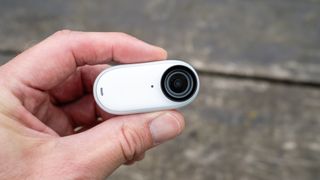
Specifications
Reasons to buy
Reasons to avoid
✅ You want a magnetic camera
The Insta360 Go 3 can be mounted on any magnetic surface making it super versatile.
✅ You need stabilized footage
This camera's built-in stabilization will help to smoothy out any shaky footage you take with it.
❌ You want great photo-quality
The resolution tops out at 6.6MP which is significantly lower than many other cameras at this price point.
❌ You want a no-thrills camera
If simplicity is important to you then a simple no-thrills camera will give you exactly what you need.
This is a great magnetic action camera. Its core unit can fix to pipes, rails and fridges to name a few makeshift surfaces, and when docked in its Action Pod, you get a touchscreen that flips out so you can frame vlogs too.
This multi-function is the Go 3's most appealing selling point, helped along by the suite of accessories the camera ships with. Better still, the Action Pod wirelessly controls the Go 3 even when undocked, so you can use it as a remote viewfinder.
The Insta360 Go 3's recording caps out at 2.7K, a far cry from the GoPro Hero line of cameras. The Insta360 Go 3 also takes relatively low-resolution photos, capping out at 6.6MP square, or 3.7MP 16:9 images.
If none of those resolution limitations are an issue, the Go 3 serves up some fantastic stabilization, excellent features, and the ability to reframe your photo or video in the app after you've finished recording. It opens up a realm of creativity for budding filmmakers and content creators.
Read our in-depth Insta360 Go 3 review
Best point and shoot for travel

Specifications
Reasons to buy
Reasons to avoid
✅ You want a tonne of features
Its major selling point is the fully stabilized 30x optical zoom (24-720mm). Other features include a 180-degree tilt ‘selfie' touchscreen and 4K video.
✅ You need a viewfinder
Images can also be composed via the small electronic viewfinder (EVF).
❌ You want crisp photos
Results can often be quite soft which is not ideal if you want really detail and refined photos.
❌ You want a solid grip
You don't want be dropping this camera but you're not helped by the poorly implemented grip.
When smartphones shot to prominence for their image quality, the point-and-shoot camera market was severely hit. As such, class-leading cameras like the Panasonic Lumix ZS70 / TZ90 have had to up their game.
A point-and-shoot travel zoom is ideal for those after a small, do-it-all camera. A dedicated camera like the ZS70 / TZ90 could be a better and more versatile option for your child than a smartphone with all its distractions.
What you get here is a tiny camera crammed with great features. Its major selling point is the fully stabilized 30x optical zoom (24-720mm). Pictures may be a little soft at the edges when shooting wide, but it’s still a level up from the zoom lenses found on today's best smartphones.
Other features include a 180-degree tilt ‘selfie' touchscreen and 4K video. Images can also be composed via the small electronic viewfinder (EVF), This is a rarity on such a small camera and could further kindle an interest down the line in more serious cameras.
Read our in-depth Panasonic Lumix ZS70 / TZ90 review
How we test cameras for kids
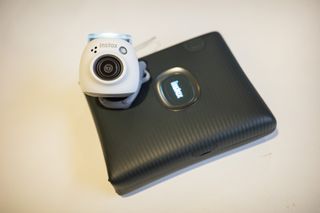
How we test cameras for kids
We've looked at a number of factors when picking a camera for kids. There’s how it operates, how tough it is (and therefore suitable for the accident prone), how expensive it is, and the type of pictures it’s capable of taking.
Some of the best cameras for kids have been specifically designed with your youngster's users in mind. That means they often feature bright, tactile physical features which allow kids to get hands-on. Models such as the myFirst Camera 3 are ideal for users like this. On the other hand, cameras such as the Olympus TG-6 are both waterproof and tough, making them well-suited for youngsters who want to take a camera with them on all their adventures, and live to tell the tale!
All the cameras that have made it into our list of best cameras for kids have been included because they offer a great experience for younger users. We’ve got a diverse list of options here, including a DIY camera that kids can build themselves to more advanced options for aspiring vloggers and travel photographers. We’ve generally kept away from ‘toy’ cameras which tend to be more of a gimmick than anything else.
Get daily insight, inspiration and deals in your inbox
Get the hottest deals available in your inbox plus news, reviews, opinion, analysis and more from the TechRadar team.

Tim is the Cameras editor at TechRadar. He has enjoyed more than 15 years in the photo video industry with most of those in the world of tech journalism. During his time as Deputy Technical Editor with Amateur Photographer, as a freelancer and consequently editor at Tech Radar, Tim has developed a deeply technical knowledge and practical experience with cameras, educating others through news, reviews and features. He’s also worked in video production for Studio 44 with clients including Canon, and volunteers his spare time to consult a non-profit, diverse stories team based in Nairobi. Tim is curious, a keen creative, avid footballer and runner, and moderate flat white drinker who has lived in Kenya and believes we have much to enjoy and learn from each other.
- Chris Rowlands
- Mark WilsonSenior news editor
- Paul HattonFreelance writer
